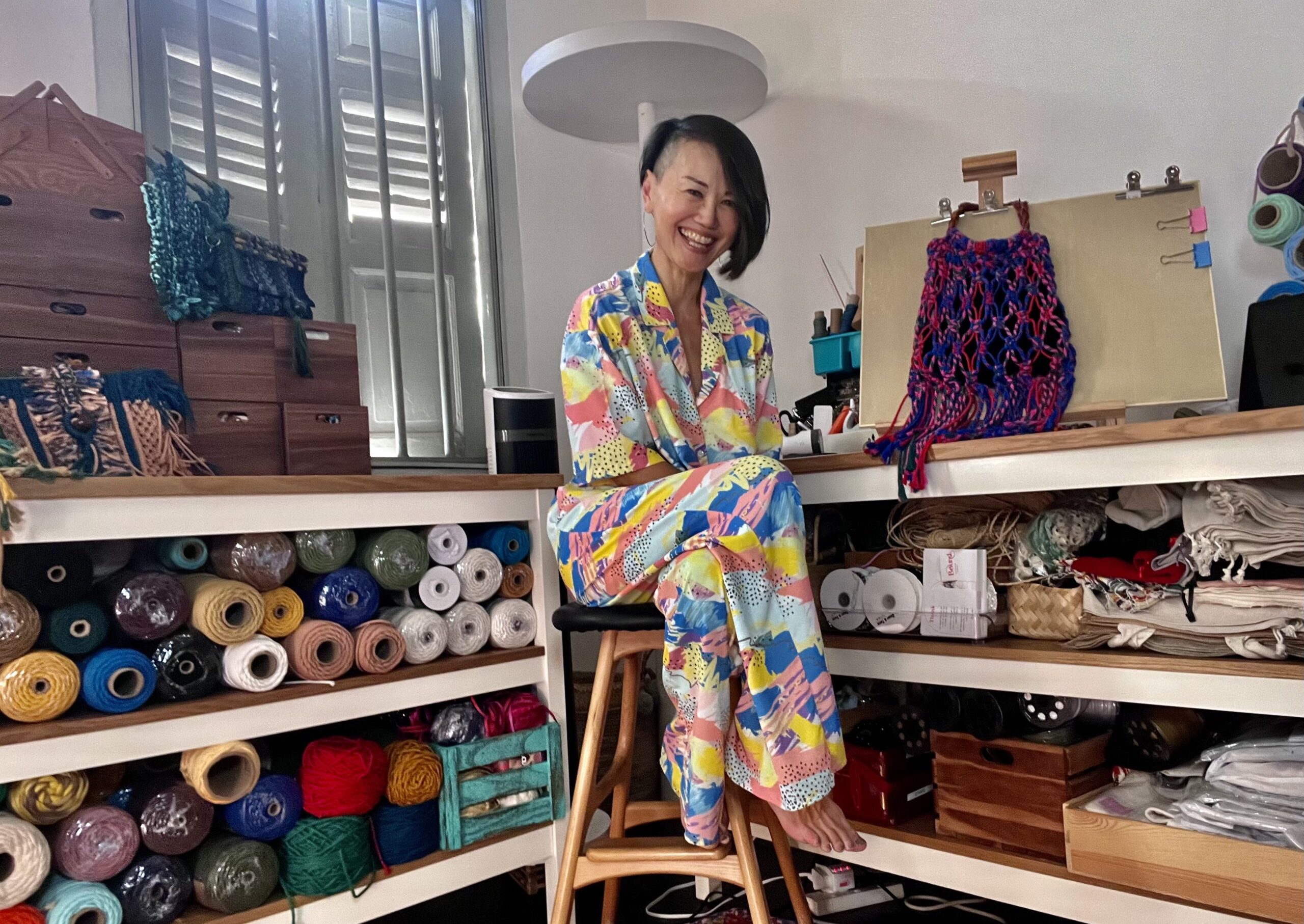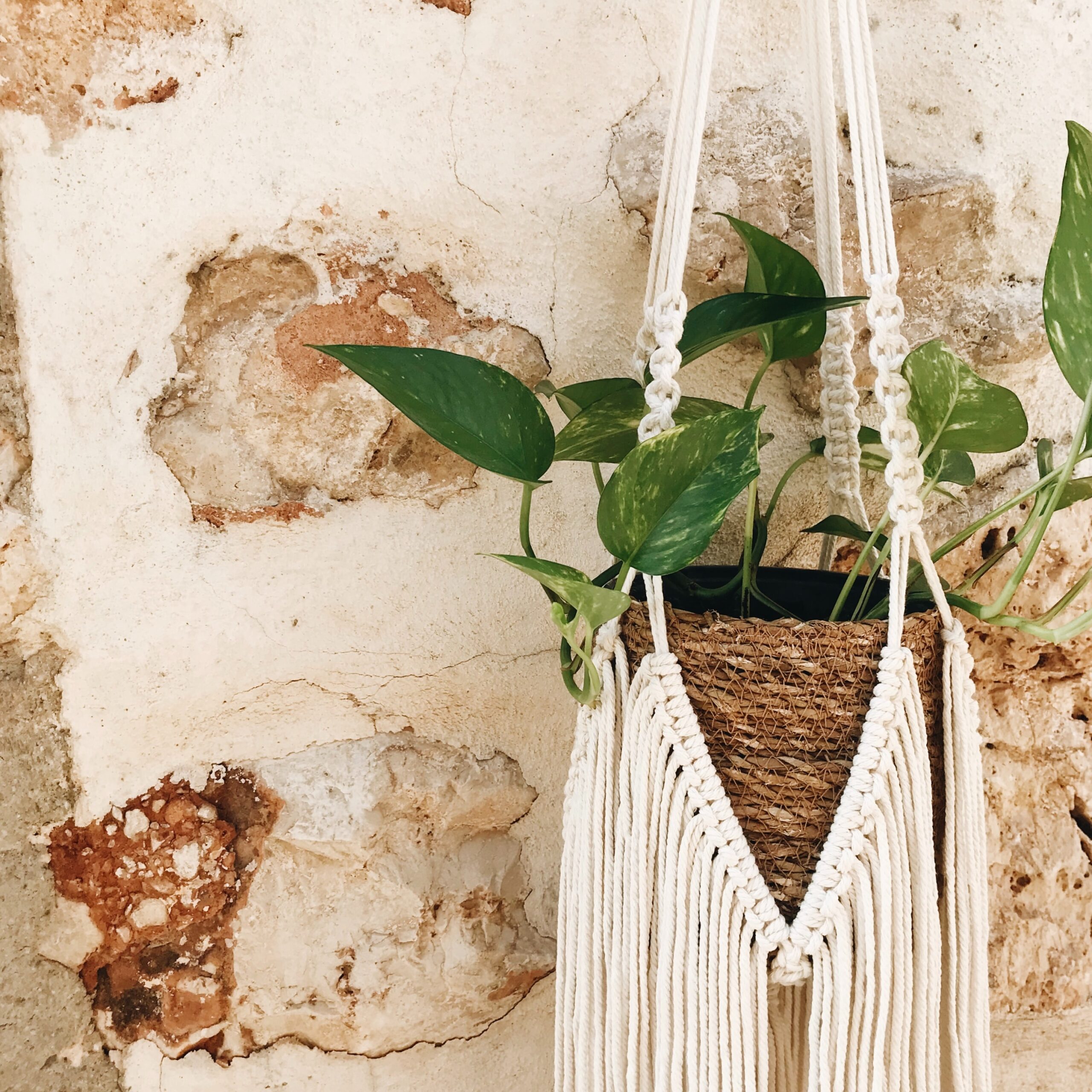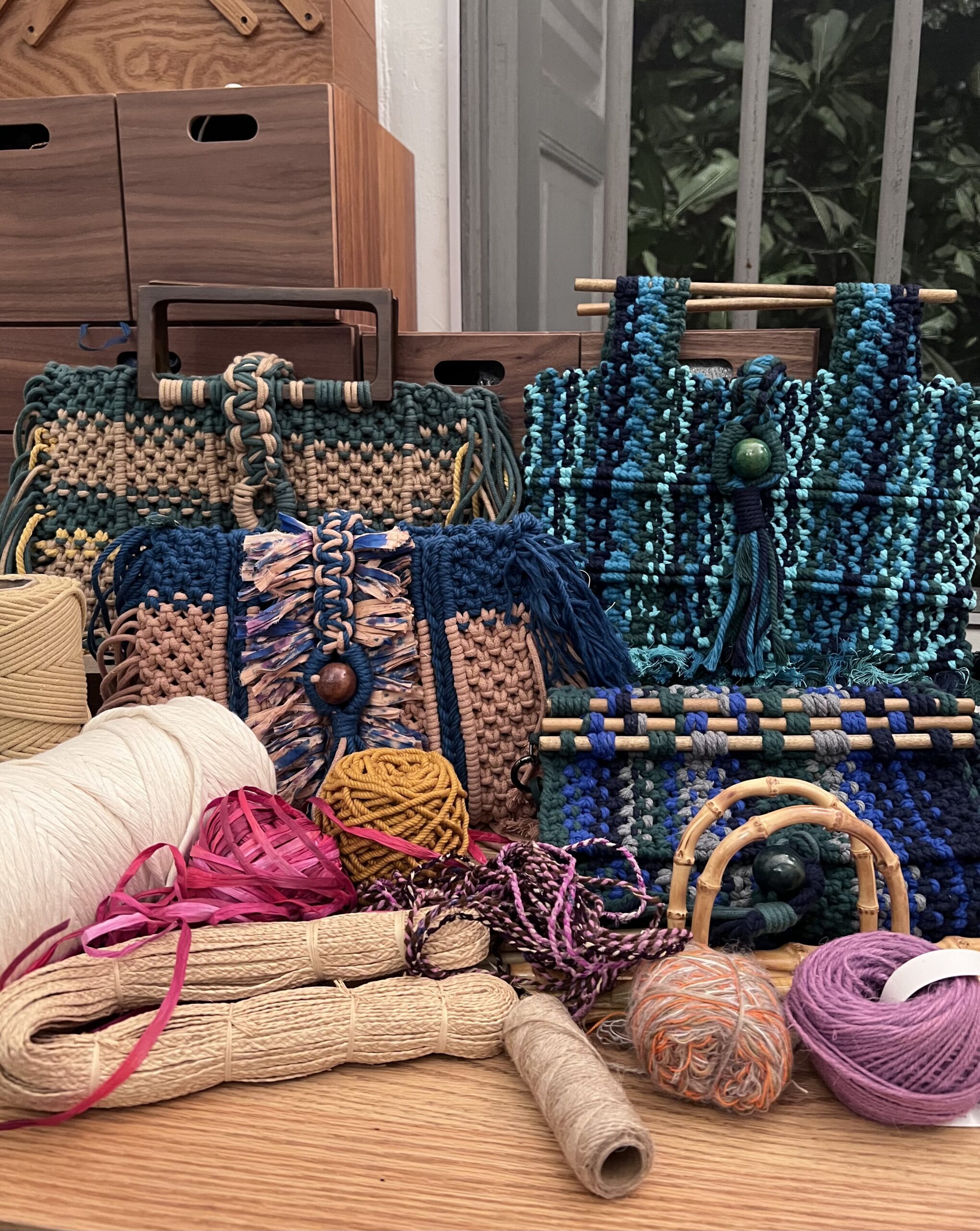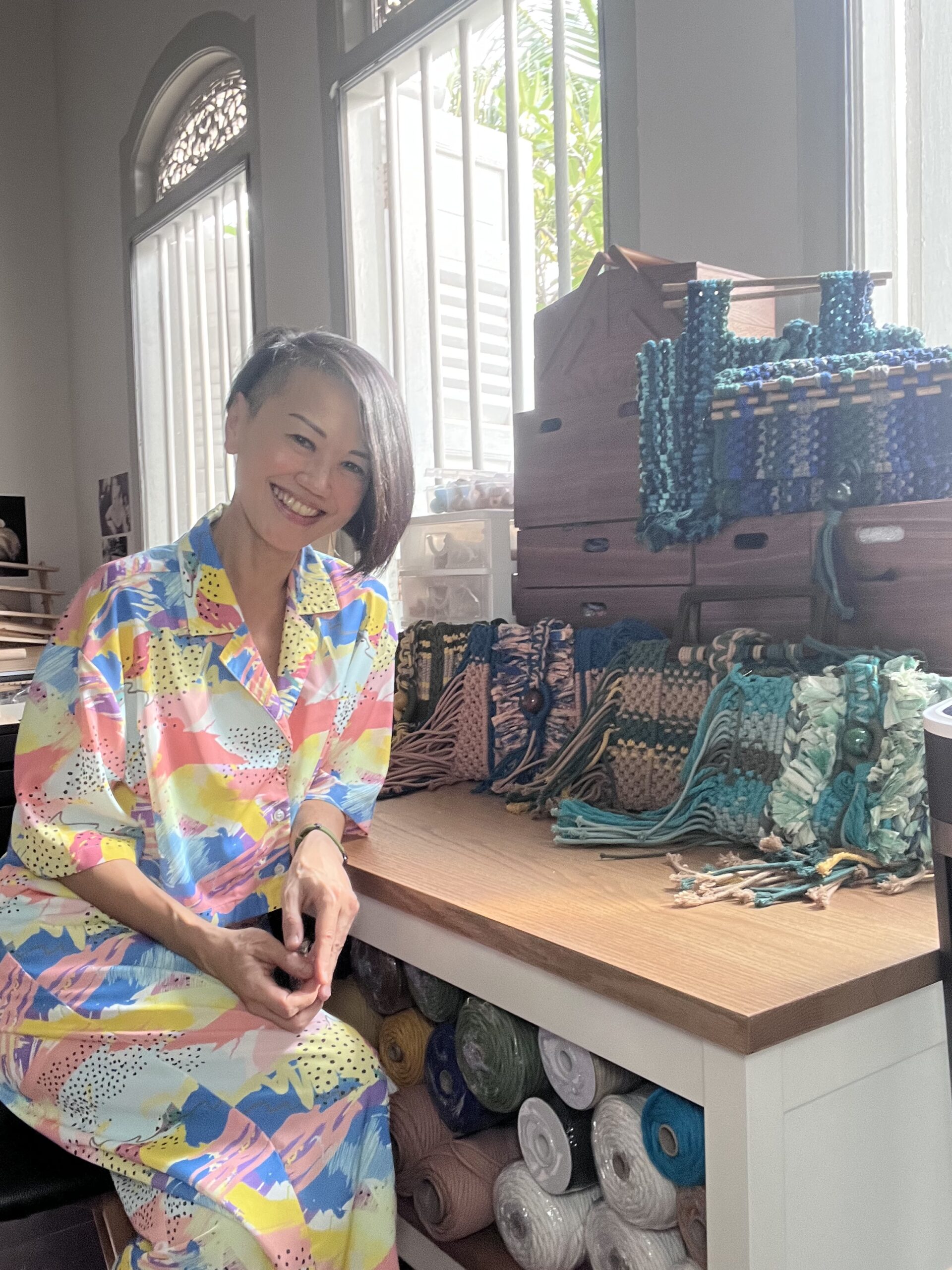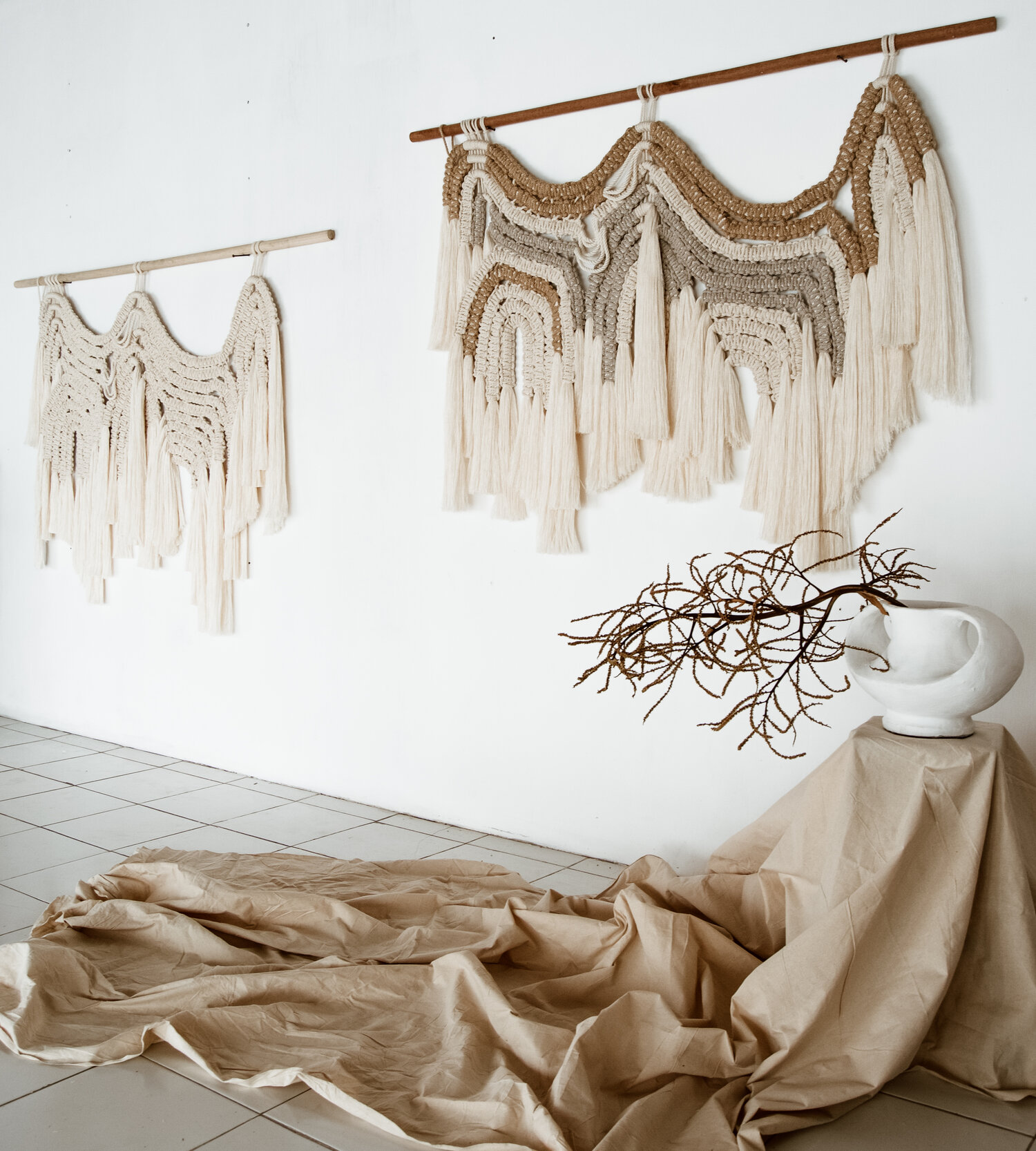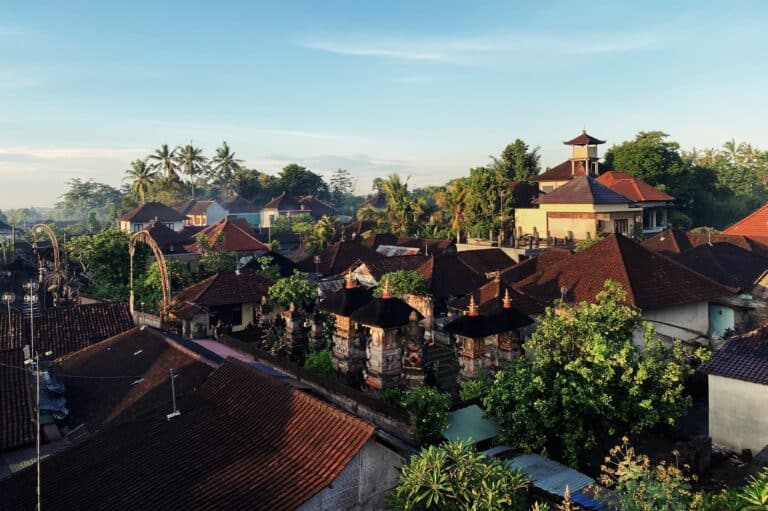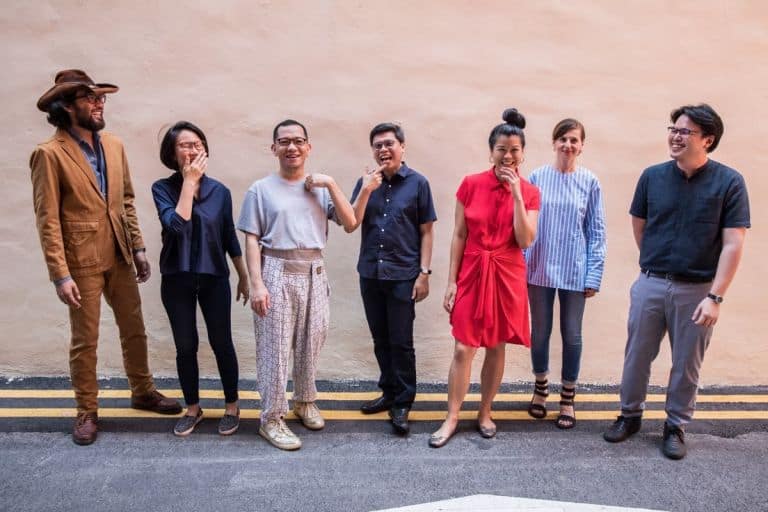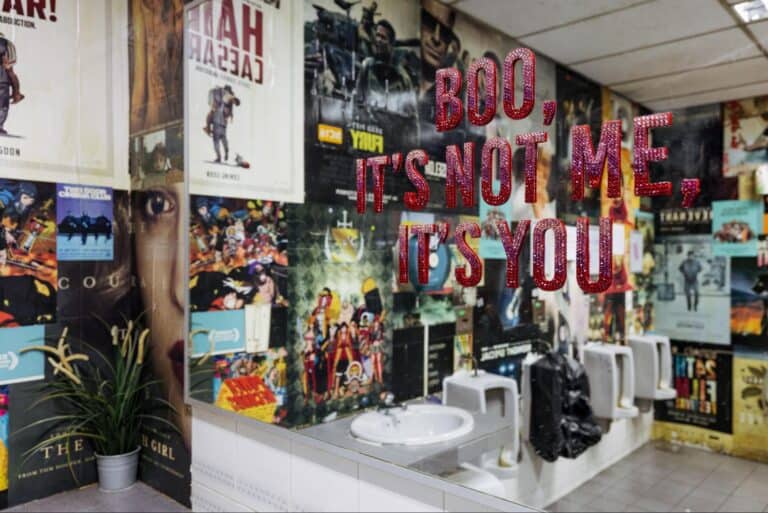The Covid-19 pandemic gave us plenty of time to pick up new hobbies as we spent time indoors. But how many of us can say that we still dedicate time to them, now that the world is slowly easing back to normalcy?
Enter Singaporean macramé artist Lu-Lyn Chang, who has come a long way from picking up the art form as a beginner during the pandemic. Since then, she has taken her hobby to new heights with Bound Designs, where she sells her handmade, one-of-a-kind macramé handbags and accessories.
Read on to learn about Chang’s journey with the medium, her processes, and how learning macramé has enabled her to give back to society.
Hi Lu-Lyn! You’re a Macramé artist. How did you begin working with the medium?
During the Covid-19 pandemic, I was looking for ways to distract myself during the lockdown. I have an active mind and was starting to feel antsy during my downtime from work. I worried about catching Covid-19; my aged mom and aunt falling sick in their home; the children catching it; and my business’s outlook and survival. It was just one thing after another. So, I looked for ways to manage the constant chatter in my head.
Oh, the things I did. First, I practised yoga daily; an increase from my twice-weekly yoga practice. I started listening to guided meditations, then tried my hand at baking followed by a Chinese dumpling phase. I then bought plants and seeds, pottering about in my yard trying to grow herbs.
I even joined my friends to learn crocheting but soon gave that up. The last thing I tried and truly enjoyed was completing 1000-piece jigsaw puzzles with my husband. We made so many we ran out of wall space to hang them. But I didn’t feel ‘settled’.
It was not until I chanced upon a YouTube video teaching the basics of making a macramé plant holder that I got a bit intrigued. To be honest, I wasn’t completely sure I could master macramé. I’m not particularly good with my hands. I can’t even fold a paper aeroplane and failed art and crafts in school.
So, I didn’t have high hopes of succeeding. I explored what other things I could make with macramé because I wasn’t that excited by a plant holder and found myself going down a rabbit hole of macramé art where you can make everything, from large wall hangings to coasters, wedding gowns, cushion covers and, of course, bags.
Finally, with macramé, I felt like I truly found my “flow”.
Overall, how has your journey with art-making and the medium been?
It has been a ton of fun. And I have been able to find my creative side in the process. But before that, there was a lot of pain and frustration. I have had to learn many things from scratch, like using my hands and trusting them to make things. That may sound basic, but for someone who has relied mostly on my marketing and business sense, talking, pitching, and the gift of the gab to make a living, using my hands and not talking for hours on end has been a real journey in getting to know myself.
I have also suffered for my art. It is not fun undoing hundreds of cords till your fingers bleed because you miscounted a knot. And I have had to do that many times. I also had a stint with tennis elbow from overzealous weaving…so yes, painful!
How long have you been practising for?
I would say about 2 years since I learnt my first knot.
What’s the process of making a Macramé work like?
It starts with me being inspired by something in my environment or a picture of a bag or a particular weave pattern I visualise in my head. I also get inspired by the colours of objects that I see. I sketch out a rough design of what I want to make, think about the materials I want to use, put them together, take them apart, swap them out, and mark out what knots or weaves in which rows I need to work on, so I don’t forget.
Then, I start measuring and cutting out the different lengths of cords and start tying them, one at a time till the body is complete. This can take anywhere from a day to a week depending on how large or complex the design is. Then, the assembly begins. Everything is handmade. For my bags, I sew a canvas lining to each bag, tie in handles, start making the strap(s), and sew on buttons and fasteners before it is complete.
Are there any quirks about the process that viewers might not grasp just from looking at your Macramé works alone?
Yes. If you undo the bag and lay it flat, what you actually see is a tapestry with the pattern and colours and weave envisaged by the designer. If you imagine the tapestry magnified many times, it can actually go on a wall and become a piece of art.
As every piece is made with human hands, there is a lot of care required to pull and tighten the cords. You have to be precise, to pull and tie each cord and knot with the same tension. You can’t be slipshod or lazy with this, or else the bag will not hold together well and look odd.
It truly is a labour of love.
What do you find most challenging and rewarding about working with this medium?
I am not the most patient person by nature and if there’s anything macramé has taught me, is patience. I found it a huge challenge to not rush through the tying process in the beginning, as I was eager to see the finished product. This cost me a lot of cords, time, and energy.
The weekends I have spent doing macramé and making these bags have tempered my nature. It has made me more deliberate, contemplative, and patient, especially with myself. Now, when I need to unpick rows of cords, I sigh, then laugh, and just get on with it.
The most rewarding aspect has got to be the thrilled faces, pictures, and thank you notes I get from the recipients of my bags. The recipients show me how they use the bags, what they wear with them, and where they took the bag(s). Also, when strangers come up to me and ask “where did you get this bag?”, the pride and exhilaration I feel are crazy special.
You mainly make Macramé bags. How did you decide to venture into this?
I focused on bags because I am vain and wanted to make bags I could use to augment my wardrobe. So I started weaving a few simple clutches and showed my friends excitedly. Then, they got excited and wanted them, so I made more and gave away a ton.
As I got more confident and learnt more complex knots, I started experimenting with colour, textures, and fibres. My designs got prettier and very soon friends were commissioning bags for themselves and paying me for them. But because I only do this on the weekends, they know not to chase me for a bag. It takes me about 2-3 weeks to think about a design for them, plan the colours, decide what textures I want to incorporate and another 2-3 weeks to finish one. Sometimes longer, haha!
On top of making bags, I have also branched out into accessories such as drape necklaces, brooches, and cuff bracelets.
What inspires your designs?
My label Bound is all about “celebrating the threads that bind us as a people to our natural environment and to each other”. As such, I am inspired by naturally occurring materials such as cotton, jute, raffia, silk, wood, wool, rattan etc. I try to incorporate these textures into my bags and accessories to see how they play together.
I am also inspired by loud, bold colours — especially what I see in Indian saris, so you’ll tend to see a lot of pretty colours in my bags. Ultimately, I want my clients to be able to make strong statements about themselves when they carry or wear a Bound accessory.
I am also inspired to teach the art of macramé to more people. Not only because is it a highly meditative, creative practice but also because I have personally benefited so much from it.
Finally, my biggest goal is to use macramé as a means to empower women. I am talking and working with a few different organisations at the moment. One of them is a women-only social enterprise in Ahmedabad, India, that employs women who have been abandoned or abused by their partners.
I have sent them a few of my designs and received some work-in-progress prototypes from them. It would be great if I could hire a few of them to help with the making of the bags and pay them a fair wage for their efforts.
We also heard that you teach Macramé art at the Singapore Women’s Prison. How did you get involved with this and what has this been like for you?
Yes! Initially, I reached out to a few women’s organisations to gauge their interest in teaching a course as a way of enhancing livelihoods or even just as a meditative practice but did not get much response. It was not until a friend of mine reached out to someone he knew at Yellow Ribbon Singapore that the idea gained traction with the women’s wing of the Singapore Prison Service.
I am in the midst of teaching a 4-week course on how to make a crossbody mobile phone bag to a small group of women inmates at Changi. Each class is about 3 hours long. Going to the prison to teach and get to know these women has been a life-changing experience for me.
I don’t think they realise the impact they have had on me, but I don’t ever want to stop doing it now that I have started. I hope they’ll invite me back to teach more inmates other macramé crafts once this set of classes is over.
Are there any Macramé artists or brands that you admire?
Yes! Belen Senra, a textile artist who owns Ranran Design and Ixchel Yué, a textile artist from Guadalajara, Mexico.
What upcoming projects are you working on?
I am in early discussions with a couple of local brands on special collaborations in the new year. One is a shoe company and the other, a beloved fashion brand. I can’t wait to see what we can do together.
____________________________________
Learn more about Bound Designs here.
Get your hands on items from Bound Accessories at P.S. It’s Christmas, our Christmas pop-up shop with SEED the Art Space! The pop-up runs from 18 – 20 November and 25 – 27 November, from 11am to 7pm at SEED the Art Space, 46 Kim Yan Road Click here to find out more about the pop-up.
